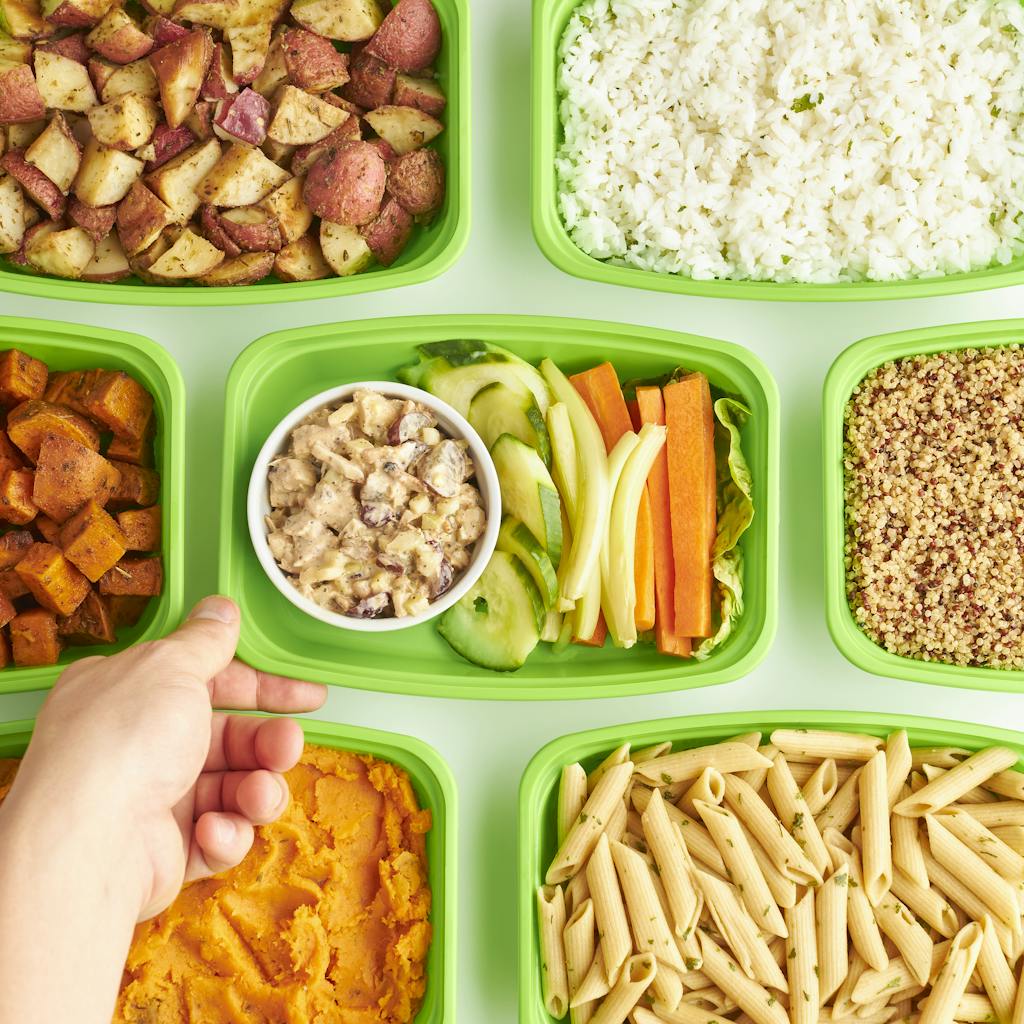FREE SHIPPING OVER $50
This 2-Step Hack Can Lower Calories in Rice, Potatoes, Pasta, and More—Dietitians Say It Works!
If you’re trying to lose weight, you know that managing calories while still eating satisfying meals can be a challenge. But did you know that you could actually lower the calorie content in foods like rice, potatoes, and pasta by altering their resistant starch levels? This two-step hack has gained popularity, with many dietitians backing its effectiveness in reducing the calories absorbed by your body. Here’s everything you need to know about this easy hack, how it works, and why it could be a game-changer for weight loss.
What is Resistant Starch?
Resistant starch is a type of carbohydrate that, unlike regular starches, doesn’t break down or get absorbed in the small intestine. Instead, it “resists” digestion and passes through to the large intestine, where it’s fermented by gut bacteria. Resistant starch behaves more like fiber than regular carbs, which means fewer calories are absorbed, and it can even improve gut health and blood sugar control. Foods like rice, potatoes, and pasta contain starch that, when cooled, transforms into resistant starch, making them ideal candidates for this method.
How This 2-Step Hack Works

Here’s a simple two-step process to increase the resistant starch content in foods like rice, pasta, and potatoes, effectively lowering their caloric impact:
- Cook the Food Normally
Prepare rice, potatoes, or pasta as usual by boiling, steaming, or baking them. Make sure to avoid adding oils or fats, as this process specifically focuses on starch transformation. - Cool the Food
After cooking, allow the food to cool completely by refrigerating it for at least 12 hours. This cooling process converts a portion of the starches into resistant starch. If you’d prefer a warm meal, reheating doesn’t reverse the effect, allowing you to still benefit from the resistant starch increase.
Why Does This Hack Reduce Calories?
Starches in foods like rice and potatoes are naturally absorbed quickly, which often causes spikes in blood sugar. However, by cooling these foods, some of the regular starches convert into resistant starch, which doesn’t digest in the same way. Since resistant starch acts like fiber, it results in lower calorie absorption and can improve digestion. Studies have shown that foods high in resistant starch can lead to a feeling of fullness and even promote fat loss due to reduced calorie intake.
While calorie reductions vary, research suggests that increasing resistant starch can reduce caloric absorption by as much as 10-15% in foods like rice and potatoes. This percentage may seem small, but over time, it can significantly impact your daily caloric intake and weight management goals. Plus, this method doesn’t sacrifice flavor or portion sizes, allowing you to enjoy your favorite foods with fewer calories .
Nutritional Benefits of Resistant Starch
Beyond reducing calories, resistant starch provides additional health benefits that can support weight loss and overall wellness:
- Improves Satiety: Resistant starch increases satiety, making you feel full longer, which may help curb cravings and reduce snacking.
- Enhances Gut Health: It acts as a prebiotic, feeding beneficial bacteria in your gut. A balanced gut microbiome can support digestion and potentially aid in weight management.
- Helps Stabilize Blood Sugar: Resistant starch can help stabilize blood sugar levels by slowing down the release of glucose, making it beneficial for people with insulin sensitivity or diabetes.
How to Apply This Hack to Different Foods
This hack works well with any starchy food that contains carbohydrates capable of being converted into resistant starch. Here’s how you can use it with popular foods:
- Rice: Cook rice, then refrigerate it overnight. The next day, you can enjoy it cold in a salad or reheat it for a traditional meal.
- Potatoes: Boil or bake potatoes, then cool them in the fridge for 12 hours. Use them in a potato salad or reheat for mashed potatoes.
- Pasta: Cook pasta al dente, drain, and cool in the fridge. Add to a pasta salad or warm it up for a comforting meal.
- Oats: Make overnight oats by mixing raw oats with your choice of liquid and leaving them in the fridge for at least 12 hours. This slow soak increases resistant starch while providing a quick breakfast.
Additional Tips for Success
If you’re excited to try this hack, here are some practical tips to get the most out of it:
- Experiment with Different Dishes: Use leftover rice for stir-fries, potatoes for salads, and pasta for meal prep bowls.
- Meal Prep: Since this method requires cooling time, meal prepping at the start of the week can make it easy to have these resistant starch-rich foods ready for reheating.
- Watch Portion Sizes: While resistant starch can lower calorie absorption, sticking to portion sizes helps you control calorie intake.
- Combine with High-Fiber Foods: Adding fiber-rich vegetables can boost fullness and balance out meals.
The Link Between Resistant Starch, GLP-1, and Weight Loss with Ozempic
One fascinating benefit of increasing resistant starch in your diet is its effect on a hormone called glucagon-like peptide-1 (GLP-1), which plays a key role in weight management and blood sugar regulation. GLP-1 is a hormone naturally produced in the gut after we eat, helping to signal fullness, slow gastric emptying, and regulate blood sugar levels. This is similar to how certain weight loss drugs like Ozempic work. Ozempic (semaglutide) is a popular GLP-1 receptor agonist that amplifies these effects, promoting weight loss by reducing hunger and stabilizing blood sugar levels.
Consuming resistant starch can naturally increase the production of GLP-1. When resistant starch reaches the large intestine, it ferments and produces short-chain fatty acids (SCFAs), which can stimulate GLP-1 release. This process helps people feel full longer and manage blood sugar levels without the immediate glucose spikes often associated with refined carbs like regular white rice, potatoes, or pasta. In this way, resistant starch can work as a more natural, diet-based alternative to achieve similar metabolic benefits to Ozempic, though at a more gradual pace.
Common Myths About Resistant Starch
Myth 1: Resistant Starch Eliminates Calories Entirely
Resistant starch doesn’t completely eliminate calories but rather reduces the amount your body absorbs. So, while it’s not a zero-calorie solution, it does offer a meaningful reduction that can aid weight loss.
Myth 2: Only Cold Foods Have Resistant Starch
Although cooling is essential for creating resistant starch, reheating doesn’t break it down. You can reheat rice or potatoes and still benefit from the increased resistant starch.
Myth 3: All Carbs Can Be Transformed with This Hack
Only specific carbs, like those in rice, potatoes, pasta, and certain grains, effectively convert to resistant starch. Non-starchy vegetables and refined carbs won’t have the same transformation.
Is This Hack Right for Everyone?
Using resistant starch to lower calories can be a beneficial approach for those on a weight-loss journey or people with blood sugar management concerns. However, if you’re following a very low-carb or ketogenic diet, the carbohydrates in foods like rice, potatoes, and pasta may not align with your plan. As with any dietary approach, it’s best to experiment to see what fits best for you.
Final Thoughts
Incorporating resistant starch is a simple, science-backed way to lower the calorie impact of certain foods without sacrificing flavor or satisfaction. This two-step hack allows you to continue enjoying carb-rich favorites like rice, pasta, and potatoes in a healthier way. By cooling and reheating your foods, you can naturally reduce calorie absorption, support gut health, and keep your blood sugar stable—all factors that can assist with weight management and overall wellness.
Related Articles
- How to Drop from 30% to 10% Body Fat—The Simplest Strategy to Get Lean
- The Best Breakfasts for Weight Loss According to Doctors—Why Men and Women Need Different Morning Meals
- Why Some People Eat More and Lose Weight: The Secret Revealed
- Why They Call This Fiber Supplement “The Poor Man’s Ozempic”
- The Surprising Morning Ritual That Burns Belly Fat—It Takes Less Than 5 Minutes



